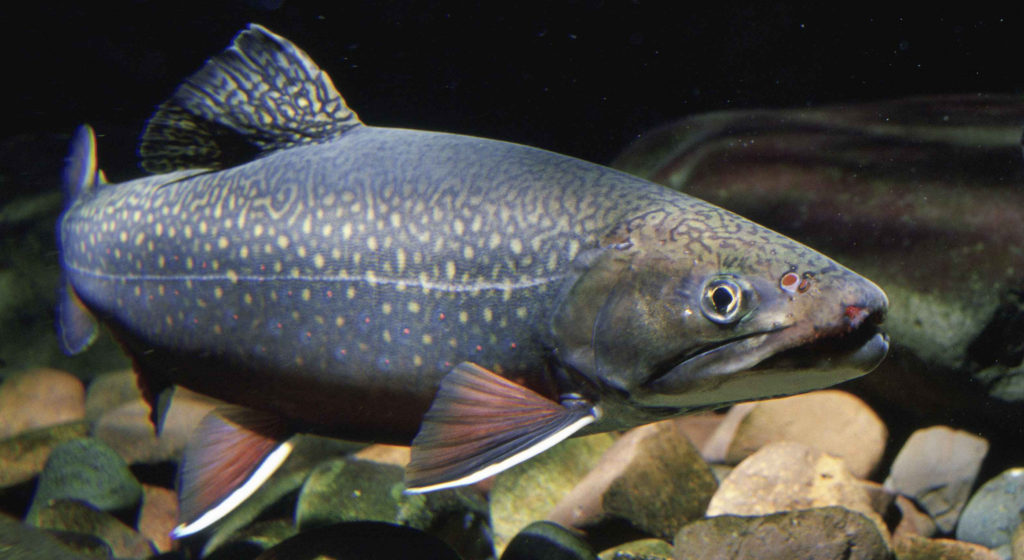
Nonnative brook trout exist in high numbers in the Upper Malheur River basin. In response to the identification of brook trout as a limiting factor to the recovery of ESA-listed bull trout in the basin (USFWS, 2002), the Burns Paiute Tribe Natural Resources Department (BPT) began brook trout suppression efforts in 2010. Since 2001, the Tribe has acquired two properties totaling 8,145 acres and managed for wildlife mitigation according to agreements with the Bonneville Power Administration (BPA). The Malheur River and its two main headwater tributaries, Big Creek and Lake Creek, flow through these properties. The preservation and enhancement of bull trout is important to BPT and helps guide management decisions on its property. Additionally, bull trout protection contributes to decisions concerning grazing and agricultural practices for other agencies, grazing allottees, and private landowners throughout the basin.
In conjunction with brook trout removal activities, BPT has partnered with Cramer Fish Sciences (CFS) since 2011 to develop an environmental DNA-based technique as a metric to monitor abundance trends. Environmental DNA (eDNA) is genetic material naturally shed by organisms that can be found in bulk environmental samples without isolating individual organisms. Samples were taken in both lacustrine and riverine environments twice annually (pre-spawn and post-spawn) for three field seasons and were compared to capture data. In 2014, eDNA sampling protocol shifted from taking whole water samples to using a peristaltic pump to capture DNA on a small contained filter. This technique has increased detection rates and is well suited for remote sampling locations. This project has demonstrated that the eDNA technology can generally detect brook trout presence in a body of water. Genetic sequencing of brook trout has also occurred through this partnership; however, variables due to the hydrology and physical conditions of sampling locations have not been tested. While many methodological uncertainties have been overcome and the use of eDNA technology has expanded tremendously in the last 5 years as a monitoring tool, these uncertainties must be remedied in order to expand the utility of this technology to other scenarios in species detection. For example, the maximum downstream distance for reliable detection of species is needed to structure sampling appropriately in order to both minimize costs and maximize detection probability. Another difficulty pertains to biomass, which positively correlates with DNA in the environment, but the relationship between the amount of DNA detected from within a water sample and the number of individuals (biomass) present is unclear.
With the framework now in place for monitoring species abundance using eDNA and the advancement of sampling methodology, the Burns Paiute Tribe seeks to maximize the potential of this technology. The goal of the Tribe is brook trout eradication in the Upper Malheur River basin. An integral part of this goal is the development of cost effective means to monitor eradication success. Therefore, the Tribe proposes to develop protocol specific to stream flows for sampling to detect species presence post-removal and as a means for early detection of new invasions. While eDNA has been used previously for the detection of rare and/or cryptic species (Teletchea, 2009; Jerde et al., 2011), condition-specific sampling intervals are lacking. The proposed project would consist of using known locations and quantities of fish and sampling downstream to determine the distance over which eDNA can be consistently detected. Sampling would occur twice per year for three years in diverse stream settings and environmental conditions that may contribute to eDNA carry distance. From information gained in these controlled trials, we will devise a protocol for appropriate sampling intervals based on stream flows that will yield high probabilities of detection, given presence.
West Sacramento
(916) 231-1681
3300 Industrial Blvd., Suite 100
West Sacramento, CA 95691
Cramer Fish Sciences
©2025